 https://media.airfactsjournal.com/wp-content/uploads/2024/12/02120707/do-crash-videos-make-us-safer.png
1000
1250
Alexander Sack
https://media.airfactsjournal.com/wp-content/uploads/2024/09/03140241/AF_Logo_24.png
Alexander Sack2024-12-16 08:55:552024-12-17 08:17:18Do Crash Videos Make Us Safer Pilots?
https://media.airfactsjournal.com/wp-content/uploads/2024/12/02120707/do-crash-videos-make-us-safer.png
1000
1250
Alexander Sack
https://media.airfactsjournal.com/wp-content/uploads/2024/09/03140241/AF_Logo_24.png
Alexander Sack2024-12-16 08:55:552024-12-17 08:17:18Do Crash Videos Make Us Safer Pilots?NEW ARTICLES
OUR MOST RECENT POSTS
Air Facts was first published in 1938 by Leighton Collins, dedicated to “the development of private air transportation.” It’s a different world now, and it’s a different Air Facts. Relaunched in 2011 as an online journal, Air Facts still champions, educates, informs and entertains pilots worldwide with real-world flying experiences. More…
 https://media.airfactsjournal.com/wp-content/uploads/2024/12/02120707/do-crash-videos-make-us-safer.png
1000
1250
Alexander Sack
https://media.airfactsjournal.com/wp-content/uploads/2024/09/03140241/AF_Logo_24.png
Alexander Sack2024-12-16 08:55:552024-12-17 08:17:18Do Crash Videos Make Us Safer Pilots?
https://media.airfactsjournal.com/wp-content/uploads/2024/12/02120707/do-crash-videos-make-us-safer.png
1000
1250
Alexander Sack
https://media.airfactsjournal.com/wp-content/uploads/2024/09/03140241/AF_Logo_24.png
Alexander Sack2024-12-16 08:55:552024-12-17 08:17:18Do Crash Videos Make Us Safer Pilots?
Friday Photo: Lower Manhattan on Halloween
Friday PhotoMy instructor Justin and I flew the Hudson VFR corridor on Halloween night 2024. Justin taught me the tricks of night flying, while we treated ourselves to a magnificent view of NYC skyline. The stiff 25 knots headwind on the downriver leg provided us with the perfect pace to fully appreciate the majestic Manhattan skyscrapers.

Anticipation
OpinionThere are many riddles to the human brain, and they are mostly borne from experience. It is more the Lamarckian trait rather than the Darwinian trait. Nothing is baked in except when it is through experience. We address life through the lens of our living. We catalogue our experiences inside the small molecules of proteins in our brain. Some from our childhood stick permanently, albeit with embellishments.

Checkrides gone wrong: rope-a-dope
I was thereOne of Gene’s pet maneuvers was to demonstrate to the student pilot that his senses would lie to him while flying in the clouds on instruments, or at night. The ultimate lesson objective was to trust your flight instruments, and not your senses. He would have the student put the instrument flying hood on, then do a couple of routine flight maneuvers by reference to the flight instruments, then “the show” would begin.

Christmas reading list: 24 books for pilots to read in 2024
John's blogSix years after my last list, I still hate social media and I still love books, so I’m back with more recommendations—24 good aviation books for 2024. This is an eclectic mix, so I don’t expect readers to love every suggestion, but I believe there’s something for pilots to learn from almost any book, even if it doesn’t relate to aviation directly.

Checking off a bucket list item
I was thereStill wearing my flight suit as I walked about, I happened upon a large-scale model of a P-47 set in a WWII diorama. I instantly recognized it as Francis Stanley ‘Gabby’ Gabreski’s P-47 from when he commanded the 61st Fighter Squadron (the ‘Top Dawgs’). Gabby was the leading ace in the European Theater during WWII and is credited with destroying 34½ aircraft in aerial combat which made him one of only seven US combat pilots to become an ace in two wars.
John’s Blog
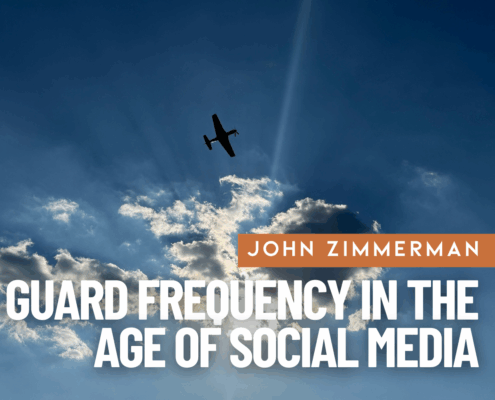
Guard frequency in the age of social media
John's blogYes, this is an “old man yells at cloud” article. Yes, I can already hear the jokes about the “guard police.” I don’t care. It needs to be said: Guard frequency (121.5) has become a national embarrassment, a sign that our self-absorbed social media culture has spread to the once-boring world of aviation. We need to do better.
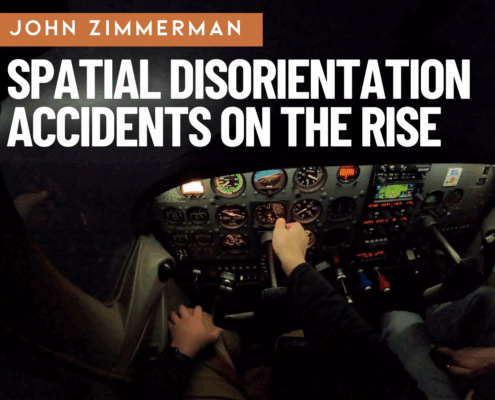
Why are spatial disorientation accidents on the rise?
John's blogResearchers from the FAA show that SD accidents have not declined since 2003—in fact, quite the opposite. You might assume the widespread adoption of tools like datalink weather, modern autopilots, reliable AHRS, and electronic flight bag apps would make VFR-into-IMC (the classic SD accident scenario) much less common. It’s a great theory, but the numbers don’t support it.

The aviation community is alive and well
John's blogBefore the expletive could even leave my mouth, one of the FBO employees offered to lend me the crew car. I assumed the crew car option would be impossible, or at least impossibly bad manners, since the round trip would be nearly two hours and the FBO was closing soon. But he wouldn’t hear it: “take all the time you need and just drop the keys off with the night security guard. We appreciate your business.”
I Can’t Believe I Did That
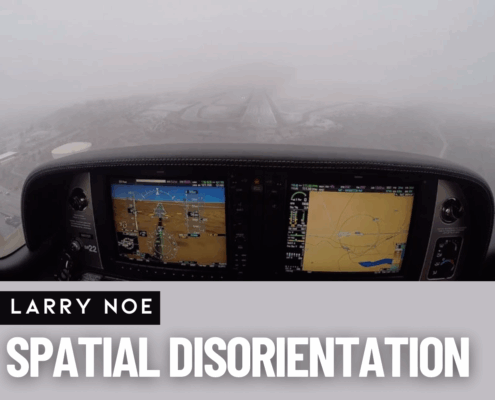
Spatial Disorientation: I Thought It Couldn’t Happen to Me
I Can't Believe I Did ThatI began climbing to get between layers, intending to stabilize and then request IFR. But as I entered the clouds, what I thought could never happen did. I was in an unusual attitude: 45 degrees banked and nose down. For a moment, I considered pulling the CAPS parachute. I had often wondered if I’d have the presence of mind to use it in a real emergency. After this, I know the answer is yes. But I also realized I could recover.
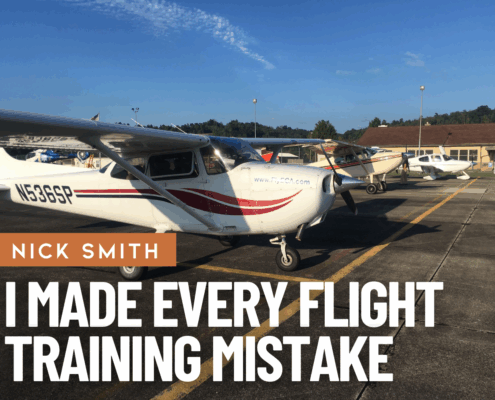
I Made Every Flight Training Mistake Humanly Possible
I Can't Believe I Did ThatFlight training is rarely a straight line, but for Nick Smith it turned into a winding, four–year journey full of delays, false starts, and unexpected costs. In this brutally honest account, he shares the mistakes he made—so future pilots don’t have to repeat them. His story is both a cautionary tale and a reminder that perseverance can still lead to the certificate.

A Quarter Tank and a Prayer
I Can't Believe I Did ThatI was watching the fuel gauges drop before my eyes. I elected to continue to ECG rather than turn back. I was on a direct course. The Norfolk controller wished me luck—not the most reassuring sign—and handed me off to ECG Tower, who had already been briefed.
Opinion
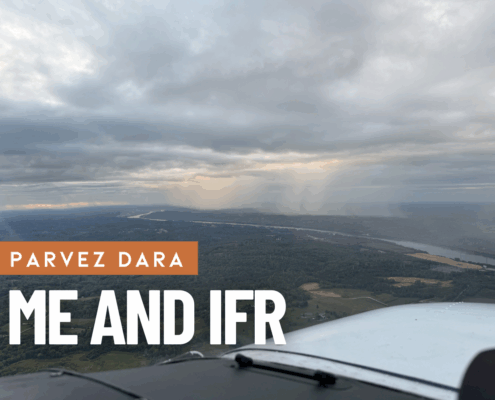
Me and IFR
OpinionDuring another smooth cloudy day, a relative—who shall remain unnamed—asked if I wanted to fly. Weather was marginal VFR; he had his IFR rating. At 3,000 feet, we entered clouds. I panicked briefly, deer-in-headlights style. Calmly, he asked me to hand him his foggles from the seat pocket. Did that give me confidence? Not really. But the flight remained calm and uneventful. He wore view limiters in clouds for comfort—something I couldn’t quite fathom at the time.

Yes, I Still Take Flying Lessons
OpinionI approach every flight with an instructor with a plan of my own. I don’t just show up because the calendar says it’s time. I bring specific goals, real-world questions, and skills I want to sharpen. My annual IPC isn’t about checking FAA boxes; it’s about tackling challenges I’ve faced over the year and flying approaches that have pushed me.

Generally Affordable? The Truth About Flying Costs
OpinionThe economics of flying is not for the faint of heart. In fact, the average cost of just getting your “license to learn” is now hovering around the $20,000 mark. And if that number doesn’t faze you, then let me sprinkle in some rampant inflation, a tight insurance market, and just the high opportunity cost of staying current—let alone proficient—into the mix.
More Articles
Recent Posts
Email newsletter
Write for us!
Did you know that most of the articles at Air Facts are written by readers like you? You do not have to be Richard Collins or Ernest Gann – simply a GA pilot with a story you’d share with friends sitting in the hangar.

